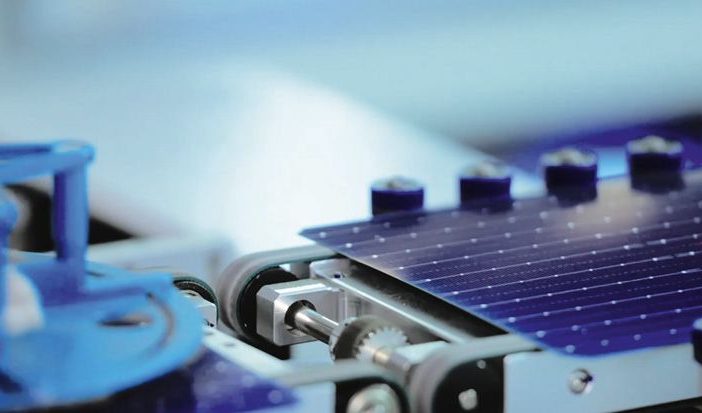- Booming investment in the manufacturing of clean energy technologies, especially solar PV and batteries, is becoming a powerful economic driver globally, creating new industrial and employment opportunities, according to a new report from the International Energy Agency released today.
- Global solar cell and solar panel manufacturing capacity grew by around 550 GW in 2023 with around 80% of the current global PV manufacturing industry based in China.
- India and the United States each hold a 5% share while Europe accounts for a mere 1%.
In a first-of-its-kind analysis, Advancing Clean Technology Manufacturing finds that global investment in the manufacturing of five key clean energy technologies – solar PV, wind, batteries, electrolysers and heat pumps – rose to USD 200 billion in 2023, an increase of more than 70% from 2022 that accounted for around 4% of global GDP growth.
Spending on solar PV manufacturing more than doubled last year, while investment in battery manufacturing rose by around 60%. As a result, solar PV module manufacturing capacity today is already in line with what is needed in 2030 based on the IEA’s net zero emissions scenario. For battery cells, if announced projects are included, manufacturing capacity is 90% of the way towards meeting net zero demand at the end of this decade.
The report finds that many projects in the pipeline will be operational soon. Around 40% of investments in clean energy manufacturing in 2023 were in facilities that are due to come online in 2024. For batteries, this share rises to 70%.
“Record output from solar PV and battery plants is propelling clean energy transitions – and the strong investment pipeline in new facilities and factory expansions is set to add further momentum in the years ahead,” said IEA Executive Director Fatih Birol. “While greater investment is still needed for some technologies – and clean energy manufacturing could be spread more widely around the globe – the direction of travel is clear. Policy makers have a huge opportunity to design industrial strategies with clean energy transitions at their core.”
Clean energy manufacturing is still dominated by a few regions. China, for example, is currently home to more than 80% of global solar PV module manufacturing capacity. However, the report finds that the manufacturing of battery cells could become less geographically concentrated by the end of this decade; if all announced projects are realised, Europe and the United States could each reach around 15% of global installed capacity by 2030.
New data and analysis based on plant-level assessments of more than 750 facilities indicate that China remains the lowest-cost producer of all clean energy technologies. Battery, wind and solar PV manufacturing facilities are typically 20% to 30% more expensive to build in India than in China, and 70% to 130% more in the United States and Europe. However, the vast majority of total production costs for these technologies (70% to 98%) is estimated to come from operational costs, which include inputs such as energy, labour and materials – implying that production cost gaps seen today are not immutable and can be influenced by policy.
Link to the full report HERE
Author: Bryan Groenendaal















